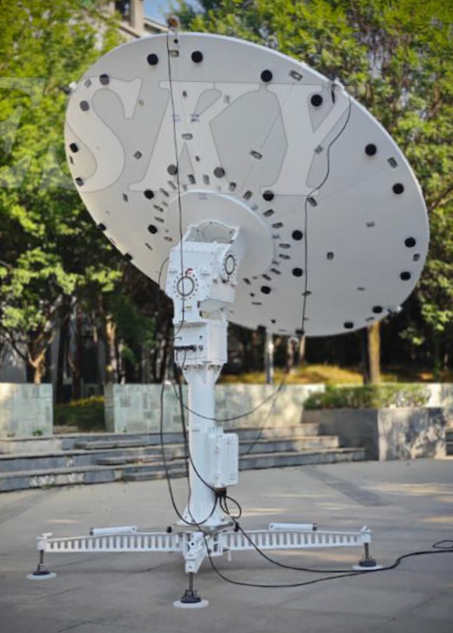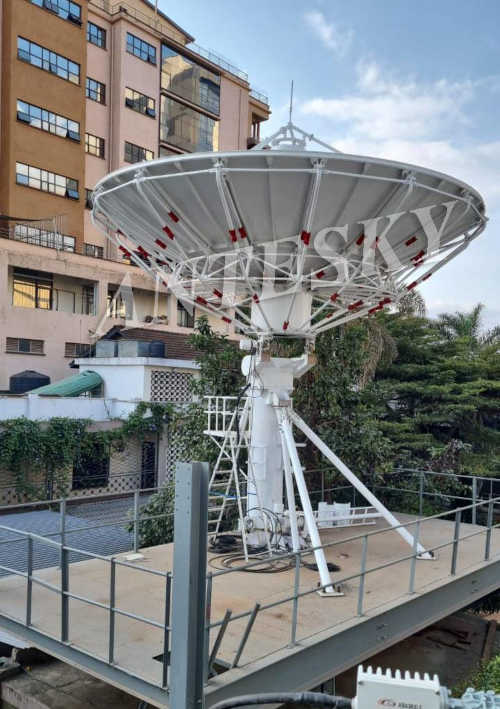
An XY-axis mount, as shown above, is commonly used in antenna systems to provide precise positioning. This XY setup is particularly useful for applications requiring the tracking of moving objects (e.g., satellites, drones, or aircraft) or adjusting antenna beams dynamically.
In this XY configuration, the antenna is pointed by simultaneously coordinating the rotation of two axes. This is different from the elevation-over-azimuth system in which the vertical azimuth axis is first adjusted and then the horizontal elevation axis is adjusted.
The XY axis mount system consists of two mutually perpendicular rotation axes:
X axis: this is usually parallel to the ground.
Y axis: perpendicular to the X axis.
Main features of XY axis mountSymmetrical structural design: The two axes of the XY axis mount are similar mechanically, possibly with identical gear mechanisms, angle measurement arrangements, electrical power supplies and electronic control circuits.
Balance: The weight distribution is usually more balanced than that of the elevation-over-azimuth system.
No zenith blind spot: There is no tracking problem near the zenith as occurs in the traditional elevation-over-azimuth system. This is a key benefit of the XY arrangement, making it suitable for applications where the tracking of objects that may move overhead or near to overhead is required.
Dynamic performance: Excellent performance in high dynamic tracking scenarios.
Mechanical performance comparisonThe mechanical advantages of XY-axis vehicles are mainly reflected in:
Structural rigidity: Symmetrical design makes the overall rigidity distribution more uniform.
Bearing load: The force on each bearing is more balanced and the wear is more uniform.
Wind resistance characteristics: Generally has better aerodynamic characteristics.
Maintenance convenience: Symmetrical structure makes maintenance channels easier to design.
Control complexityAlthough the XY axis mount has mechanical advantages, its control system is relatively complex:
Real-time coordinate conversion is required.
The axis coupling effect is more obvious.
More accurate axis calibration is required.
Illustration below of traditional elevation-over-azimuth mount
Example of an antenna with elevation-over-azimuth mount. When pointed at or near the zenith (directly upwards) very large and rapid changes in azimuth angle are required for slight movements of the satellite.




